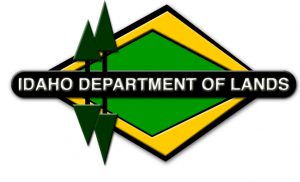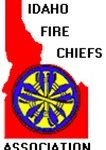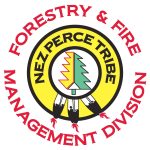
Fire Ecology & Management
Fire Management Strategies & Tactics
Principles & Practices
WUI Culture
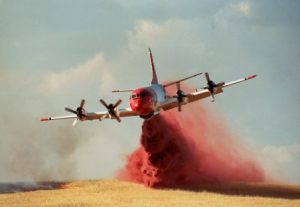
Aerial applications of retardant is a commonly used fire fighting strategy.
When wildland firefighters are called to action, they immediately assess the situation to figure out how they can best attack the fire while keeping firefighters safe.
When developing a strategy, a series of questions are addressed, most importantly:
What is burning? The types of fuels involved have a great effect on a fire's behavior. Different vegetation requires different strategies, based on size, thickness, and dryness. A fire burning in sagebrush likely will require a different plan of attack than a fire burning in ponderosa pine trees.
What is nearby? The firefighting strategy for a forest or rangeland fire will differ from that for a fire near structures. Other factors are also important, such as the presence of people, pets, or livestock. This information is used to choose tactics and to allocate resources in order to save lives, homes, personal property, and valuable natural resources.

Cutting a new fireline.
Fire Lines
Next, wildland firefighters usually focus on establishing a fire line. A fire line is a break in fuels created by removing all vegetation up to an existing barrier. The barrier can be:
- Bare mineral soil
- A natural feature (such as a rock outcrop, creek, or other body of water)
- A constructed surface (such as a road or driveway)
Fire lines are started at an anchor point, usually the coldest part of the fire. The anchor point ensures a safe barrier between the fire and any unburned vegetation that could ignite and trap firefighters. The width of a fire line depends on topography, types of fuels, and weather—all factors that determine fire behavior.
Fire lines often are constructed using hoe dads, shovels, or bulldozers. A prescribed burn is another method, also called a burn out. Aerial support is another tactic. Helicopters and air tanks dump fire retardants on the landscape to establish fire lines and protect structures, not to extinguish flames.
After a fire line has been established, firefighters must ensure that it will keep the fire from spreading. When it’s windy, wildfires can jump fire lines, requiring firefighters to move to another location and start building a fire line all over again.
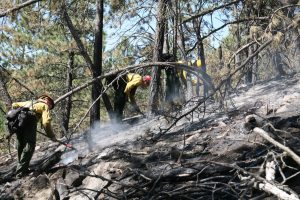
Mopping up is hard dirty work, but essential to fully put out a wildfire.
Mopping up
Once a fire is securely contained within a fire line, firefighters look for hot spots near the fire line where vegetation is still burning and extinguish them using water from fire engines and helicopters. This keeps wind from reigniting and spreading the fire. Ground crews then move through the burned area with water and hoe dads, turning over every stump and log to make sure it is cold.
A wildland fire is not considered out until a thorough mop-up has been done and no smoke has been seen for several days to weeks. Many large wildland fires, especially in wilderness areas, are not completely extinguished until rain or snow begins to fall.

Contact Us
Mike Ward, Executive Director
director@idahofirewise.org
PO Box 220
Kooskia, ID 83539
EIN 27-2535008


